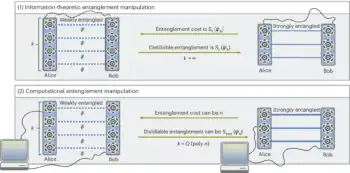Pulses of light have been slowed down and stopped in a solid for the first time. Alexey Turukhin of the Massachusetts Institute of Technology in the US and colleagues used an yttrium-based crystal to slow light pulses to just 45 metres per second, and then to trap and release them. Previously, these effects had only been seen in gases, which are more difficult to control. A solid should be easier to develop into real applications, such as high-density information storage for quantum computing (A Turukhin et al 2002 Phys. Rev. Lett. 88 023602).
In order to slow and stop light pulses, a medium must transmit light for only an extremely narrow range of frequencies. In a cloud of gas atoms, this is achieved with a ‘coupling’ laser that drives transitions between two internal energy levels in the atoms. This makes the cloud transparent to some frequencies. Pulses from another laser – which has a frequency that matches the energy difference between one of these levels and a third level – then enter the gas. These pulses would normally be absorbed, but in the presence of the coupling laser they are slowed down by quantum interference effects.
In most crystals, this laser technique produces a ‘spectral gap’ that is too wide to slow light pulses. However Turukhin and colleagues were able to use a third laser to create a very narrow gap in a crystal of yttrium silicate doped with the rare-earth metal praseodymium (Pr-YSO).
First, a coupling laser was used to create the wide spectral gap. The team then switched on a second laser with a wavelength corresponding to a different transition in the crystal. This excitation narrowed the spectral gap, leaving just a small range of frequencies at which light is transmitted through the crystal. When pulses from a third laser enter the crystal, they are slowed down by the quantum interference effects created by the narrow transmission band.
Turukhin and co-workers also found that they could trap a light pulse by switching off the coupling laser when the pulse was inside the crystal. When the coupling laser was switched back on, the light pulse emerged from the crystal.
When a light pulse is trapped inside a medium, it is compressed to a tiny fraction of its length in free space. This means that information encoded onto light pulses could be stored in a very small space. Indeed, the crystal was only three millimetres thick, although it had to be cooled to 5 kelvin.
‘Our experiment shows that this type of quantum storage is possible’, Turukhin told PhysicsWeb. ‘One of the major challenges is the low temperature, but with commercially available refrigerators, our system could lead to a suitable memory device for quantum computing.’



